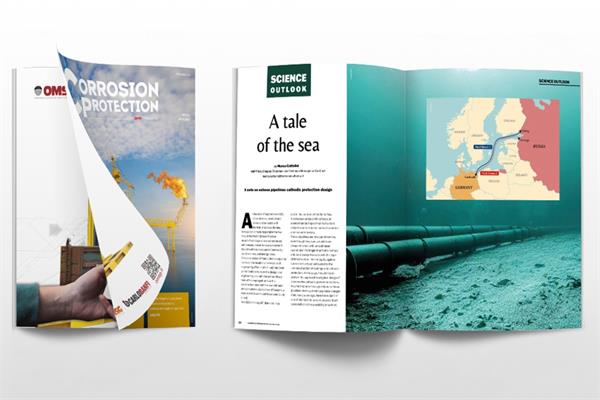
Read the latest issue of the magazine dedicated to corrosion prediction, prevention, protection and mitigation. Special edition on the energy industry!
For some years now, the energy sector has been experiencing a green acceleration: the use of fossil fuels is still widespread, but the diversification of the energy mix is gradually improving, as the world – especially Europe – is working to increase the share of renewable energy available for consumption.
Irrespective of their location, all oil and gas companies are looking for ways to reduce emissions in their processes – the European one by proactively seeking to replace fossil fuels, the US ones by focusing primarily on removing carbon emissions from existing operations (e.g., through “carbon sequestration”).
Investment in the oil sector is still going to be very high for the next three to five years, driven by the reopening of China after the pandemic. However, the global energy crisis of the last two years has undoubtedly triggered unprecedented momentum in favour of renewables, and the International Energy Agency predicts that in the next five years the world is going to produce as much renewable energy as it has in the last two decades. By 2025, renewable energy is going to overtake coal as the main source of electricity generation worldwide.
Major challenges for new energy infrastructures
This phase of energy transition towards environmentally friendly solutions poses major challenges in terms of new infrastructures or adaptation of existing ones to new energy sources and production methods.
Thanks to continuous innovation, renewable energy production plants are becoming increasingly efficient and competitive. For example, wind turbines today reach diameters of 200 metres and their size is expected to grow further. Newly constructed pipelines are designed to be able to also transport green hydrogen (an energy carrier – not a source – that can only be obtained from renewable sources) in future, so that will be still able to be used once the energy transition is complete. A decisive role is also played by energy storage systems, which are needed to make up for the intermittency of renewable sources such as sun and wind.
All the dynamism that can be detected in the trends of the next five years for the energy sector and in their related energy transition processes has also a huge impact on the sector of corrosion prevention and protection technologies, helping to lengthen the service life of assets but above all to design new infrastructure that is more efficient, durable, and easy to maintain.
This Corrosion Protection issue offers a wide-ranging and detailed insight into scientific studies and research, innovative products and success stories of corrosion protection solutions for wind turbines, gas pipelines, solar parks, hydroelectric power plants and offshore installations: from traditional epoxy systems to innovative glass flake coatings, up to new coatings containing functionalised graphene oxides and self-healing corrosion protection systems. Not to mention the analysis of the parameters for optimum surface preparation and correct design of cathodic protection systems for submerged structures and the case studies on successful maintenance interventions.
A very rich issue, testifying to the importance of investment in renewable energies as an exceptional driving force for research in the corrosion protection industry as well as a great opportunity for economic growth for all industry players.
READ THE MAGAZINE!